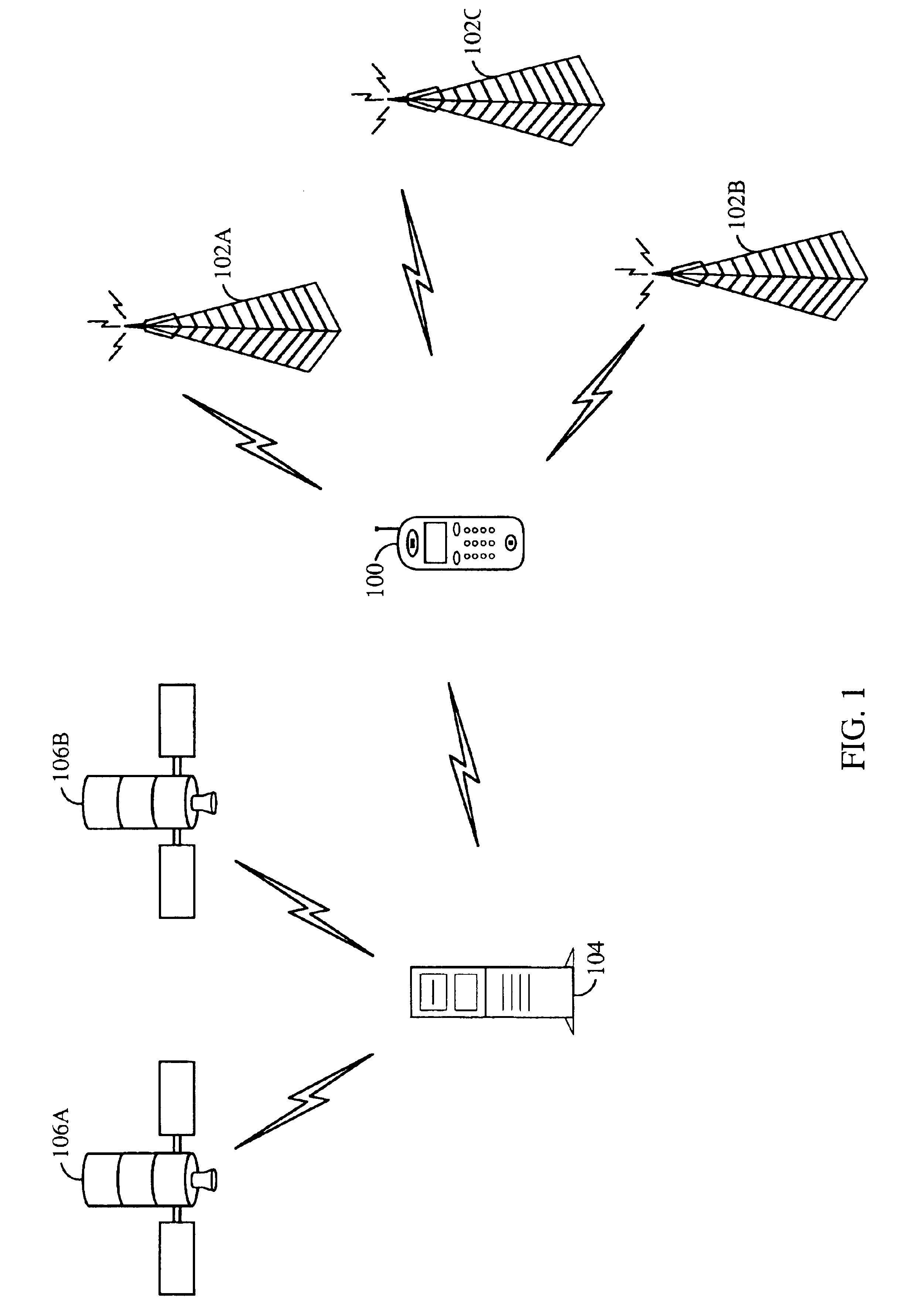Parameter estimator with dynamically variable search window size and/or placement
a dynamic search and estimator technology, applied in the field of parameter estimator with dynamic search window size and/or placement, can solve the problems of estimator typically exceeding available search time constraints, the detection of transmissions from multiple base stations or sectors is not generally effective,
- Summary
- Abstract
- Description
- Claims
- Application Information
AI Technical Summary
Benefits of technology
Problems solved by technology
Method used
Image
Examples
second embodiment
Referring to FIG. 3B, a flowchart of a method of estimating one or more parameter(s) of a signal using a dynamically variable search window is illustrated. The method begins with step 308, which comprises estimating one or more parameter(s) of a first signal from a correlation function derived using a first search window. The method proceeds to step 310, which comprises estimating one or more parameter(s) of a second signal from a correlation functions derived using a second search window which may differ or vary from the first. The second search window may have a smaller size than that of the first., and may also be differently positioned than the first, if, for example, a priori information is available for the second signal, but not the first, where the a priori information allows the estimator to roughly estimate a time of arrival of the second signal.
third embodiment
Referring to FIG. 3C, a method of estimating one or more parameter(s) of a signal using a dynamically variable search window is illustrated. This embodiment begins with step 312, which comprises attempting to estimate one or more parameter(s) of a signal from a correlation function derived using a first search window.
Step 312 is followed by step 314. In step 314, it is determined whether the estimation attempt 312 was successful or not. If so, the one or more parameter(s) may be recorded in a memory as indicated by optional step 318. If not, step 316 is performed. In step 316, a second attempt is made to estimate the one or more parameter(s) from a correlation function derived using a second search window which may differ from the first.
For example, if the first attempt was unsuccessful because a peak of the correlation function derived from the signal using the first search window could be detected but at an insufficient level of confidence, another attempt could be made to estimat...
PUM
 Login to View More
Login to View More Abstract
Description
Claims
Application Information
 Login to View More
Login to View More - R&D
- Intellectual Property
- Life Sciences
- Materials
- Tech Scout
- Unparalleled Data Quality
- Higher Quality Content
- 60% Fewer Hallucinations
Browse by: Latest US Patents, China's latest patents, Technical Efficacy Thesaurus, Application Domain, Technology Topic, Popular Technical Reports.
© 2025 PatSnap. All rights reserved.Legal|Privacy policy|Modern Slavery Act Transparency Statement|Sitemap|About US| Contact US: help@patsnap.com



